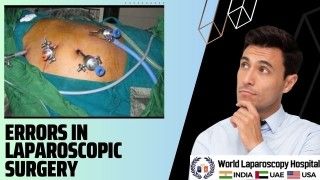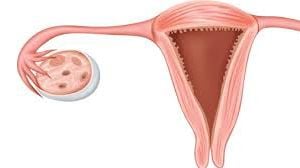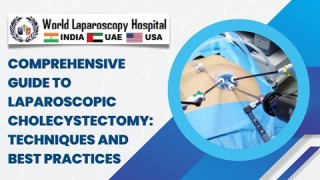Advancing Surgical Techniques: Exploring Retroperitoneoscopic Nephrectomy and Ureterolithotomy
Add to
Share
874 views
Report
2 years ago
Description
Retroperitoneoscopic nephrectomy and ureterolithotomy are two groundbreaking surgical procedures that have revolutionized the field of urology. With their minimally invasive approach, these techniques offer numerous advantages over traditional open surgeries, including reduced postoperative pain, shorter hospital stays, faster recovery times, and improved cosmetic outcomes. This comprehensive exploration delves into the intricacies of these advanced procedures, highlighting their benefits and outcomes. Retroperitoneoscopic nephrectomy is a minimally invasive procedure used to remove a diseased or non-functioning kidney. Unlike conventional open nephrectomy, which requires a large incision and significant tissue dissection, retroperitoneoscopic nephrectomy utilizes small keyhole incisions in the patient's back. This approach allows for direct access to the retroperitoneal space, where the kidney is located, without the need to enter the abdominal cavity. Through the use of specialized instruments and a laparoscope, the surgeon carefully dissects and disconnects the kidney, ultimately removing it through one of the small incisions. This technique minimizes trauma to surrounding tissues, resulting in less postoperative pain, faster recovery, and improved patient satisfaction. Ureterolithotomy, on the other hand, is a minimally invasive procedure designed to remove stones lodged within the ureter. Ureteral stones can cause severe pain, urinary tract infections, and potential kidney damage if left untreated. Ureterolithotomy offers an effective and less invasive alternative to traditional open surgery. Using retroperitoneoscopic or laparoscopic techniques, the surgeon gains access to the affected ureter and carefully removes the stone. This approach avoids the need for large incisions, allowing for quicker healing, reduced scarring, and minimal disruption to the surrounding structures. Ureterolithotomy provides rapid relief from symptoms and allows patients to resume their normal activities sooner. The adoption of retroperitoneoscopic nephrectomy and ureterolithotomy has been driven by several factors. First and foremost, these techniques offer patients a less invasive and more comfortable surgical experience. The smaller incisions result in reduced blood loss, decreased risk of infection, and shorter hospital stays. Patients can return to their daily routines more quickly, minimizing the impact on their personal and professional lives. Additionally, the improved cosmetic outcomes of these procedures contribute to patients' overall satisfaction and self-confidence. The advancement of surgical techniques in retroperitoneoscopic nephrectomy and ureterolithotomy is also a testament to the expertise and skill of urologists. Surgeons undergo specialized training to master these procedures, ensuring safe and successful outcomes for their patients. The use of advanced imaging technologies, such as ultrasound or CT scans, aids in accurate preoperative planning, allowing for precise identification of the stone or diseased kidney and optimizing surgical approach and technique. Moreover, ongoing research and technological advancements continue to refine retroperitoneoscopic nephrectomy and ureterolithotomy. Innovations in imaging, instrument design, and surgical robotics hold promise for further improving the precision and outcomes of these procedures. The continued collaboration between urologists, engineers, and researchers paves the way for future advancements, ultimately benefiting patients with renal and ureteral conditions. This comprehensive exploration delves into the advancements in surgical techniques with a focus on retroperitoneoscopic nephrectomy and ureterolithotomy. These minimally invasive procedures have revolutionized urological surgery by offering patients numerous benefits, including reduced postoperative pain, faster recovery, and improved cosmetic outcomes. Discover how these techniques have transformed the management of kidney and ureteral conditions, providing patients with effective treatment options that minimize disruption to their lives. Gain insights into the expertise and skill required for performing these procedures, as well as the ongoing research and technological advancements shaping their future. Explore the collaborative efforts of urologists, researchers, and engineers in refining and expanding these surgical techniques, paving the way for further advancements in the field. This exploration highlights the potential of retroperitoneoscopic nephrectomy and ureterolithotomy to enhance patient outcomes, improve quality of life, and contribute to the evolution of urological care. Discover the groundbreaking advancements in urological surgery through retroperitoneoscopic nephrectomy and ureterolithotomy. These minimally invasive procedures have transformed the management of kidney and ureteral conditions, offering patients faster recovery times, reduced postoperative discomfort, and improved cosmetic outcomes. Delve into the intricacies of these techniques, as skilled surgeons employ specialized instruments and advanced imaging technologies to perform precise and targeted interventions. Gain insights into the collaborative efforts of urologists, researchers, and engineers in refining these procedures, driving innovation and pushing the boundaries of what is possible in urological care. Explore the significant benefits of retroperitoneoscopic nephrectomy and ureterolithotomy, and how they contribute to improving patient outcomes and enhancing quality of life. In conclusion, retroperitoneoscopic nephrectomy and ureterolithotomy represent significant advancements in surgical techniques for the treatment of kidney and ureteral conditions. The adoption of these minimally invasive approaches has revolutionized urological surgery, offering patients numerous benefits, including faster recovery, reduced postoperative pain, and improved cosmetic outcomes. As urologists continue to refine and expand their skills, these procedures will undoubtedly play a vital role in providing optimal care for patients with renal and ureteral pathologies and contribute to advancing the field of urology. The ongoing collaboration between surgeons, researchers, and engineers ensures that these techniques evolve with the latest advancements in technology and surgical innovation. By exploring and embracing retroperitoneoscopic nephrectomy and ureterolithotomy, the medical community is pushing the boundaries of what is possible in minimally invasive urological surgery. Through continued research, refinement of techniques, and the application of cutting-edge technologies, these procedures hold great promise for improving patient outcomes, enhancing quality of life, and shaping the future of urological care.
Similar Videos






